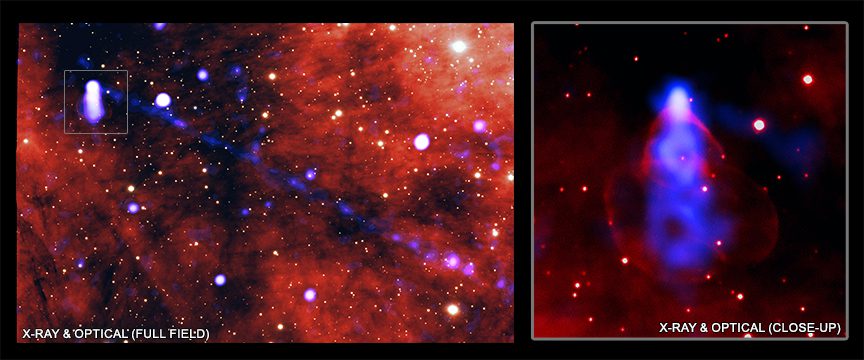A dead star on the run that is zipping across space at breakneck speeds has left a massive trail of matter as well as antimatter particles in its wake.
The star is a pulsar known as PSR J2030+4415 or J2030 for reference; it has a width of approximately 20 kilometers (12 miles) and is traveling across space at a racing speed of approximately 450 kilometers per second.
This combination of characteristics has resulted in the star’s massive, comet-like trail of particles, which extends for seven light-years over interstellar space.
A new picture from the Chandra X-ray Observatory shows matter and antimatter as particles, and it may be possible to use this information to understand why there appears to be even more antimatter in the Milky Way than predicted.
Pulsar stars
Pulsars are a kind of neutron star which are the crashed innards of stars that seemed to have main sequence masses ranging from around 8 to 30 times the mass of the Sun when they were born.
These stars are very dense and have extremely strong magnetic fields. An added bonus is the rapid rotation rate of pulsars; J2030 rotates around three times per second, which isn’t even close to the maximum speed at which some of these objects can spin.
In addition to their magnetic field, pulsars release streams of energetic particles that are normally contained within the field.
Because J2030 is traveling at such a high rate across space, its wind is following after it. A bow shock, which is near to an interstellar magnetic field line, is located ahead of it. A few decades ago, the bow shockwave appears to have calmed down, implying that the star had reached it and blasted through it at that time.
The particles spilling out of the pulsar wind appear to have been propelled somewhere along interstellar magnetic field direction to velocities of nearly a third of the speed of light, according to recent observations. This results in the beam emitting a brilliant glow when exposed to X-rays.












Leave a Reply